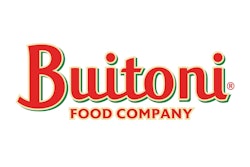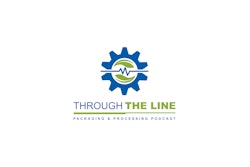Quick hits:
- By creating more records, especially for high-risk foods, investigations may be resolved more quickly, thus preventing illness overall.
- If FDA is investigating a foodborne illness, or acting on recall-level activities, processors must share a sortable spreadsheet, with the critical tracking events
- Specific cheeses, seafood, fruit and produce, as well as shell eggs and nut butters, will be affected by the proposed legislation.
- FDA Proposed Rule for Traceability—Are You Prepared?
- 10 Common Food Safety Problems and Solutions for Processing Facilities
- Counting Down the Top 10 Articles of 2021 – No. 4: Building a Food Safety Culture
 | Read the transcript below: |
I’m Joyce Fassl, Senior Executive Editor of ProFood World, with an update on proposed FDA regulations.
Perishable items and nut butters will be among foods requiring increased traceability records under an FDA proposed ruling expected later this year.
Automation, increased diligence, and additional costs and staffing may be required for affected food processors.
It might seem to the average consumer that product recalls are on the rise. But for the past few years, there has actually been a downturn in recalls, according to Eric Edmunds, food safety director, with The Acheson Group.
Edmonds says the science is improving, and the ability to detect and tie illnesses to actual causes is definitely getting better. And, of course, social media has played a huge role in making consumers more aware of recalls.
While food manufacturing plants are already maintaining strict traceability records, traceability regulations for a number of foods are expected to be announced later this year by the U.S. Food and Drug Administration.
Specific cheeses, seafood, fruit and produce, as well as shell eggs and nut butters will be affected by the proposed legislation. The proposed rule is covered under the Food Safety Modernization Act. And according to Edmunds, the underlying reason why Congress passed a law is there’s basically a slow response time to investigating certain outbreaks and foodborne illness events. So, by creating more records, especially for high-risk foods, investigations may be resolved more quickly, thus preventing illness overall.
Enhancing traceability and recordkeeping are going to improve food safety, according to Tiffany Donica, a continuous improvement coach at SafetyChain Software and former food quality director for some major manufacturers.
Donica said that the proposed FDA ruling is going to require more diligence, especially in regulatory, food safety, and quality initiatives. And that could cost facilities a little bit more in capital.
While some larger processors already have software and staff in place to adhere to the proposed rule, many plants are still using Excel spreadsheets or paper documentation for traceability. While these methods are still acceptable to the FDA, processors affected by the proposed rule should be aware that all traceability records involved in a recall incident must be sent to the FDA within 24 hours.
The FDA would prefer food processors to use tech-enabled traceability, but the statute doesn’t require it. If the FDA is investigating a foodborne illness or acting on recall-level activities, processors must share a sortable spreadsheet, with the required information for their critical tracking events.
The proposed rule is not about additional data gathering, according to Eric Edmunds of the Acheson Group. He says it’s a compilation or transmission of data to the FDA that is going to cause a little more legwork, especially in a crisis scenario.
One area that might cause some confusion for affected processors is lot codes. Processors must know how traceability lot codes interact with the existing lot codes they are receiving and producing. Processors should ask themselves if it going to create a new data element, or will they be able to transfer your existing lot coding system into the legal definition of the traceability lot code.
The FDA’s website provides an overall outline on what is contained in the proposed food traceability rule, and how lot codes come into play.
For more information, you can read my full article on this topic at this link here.


















